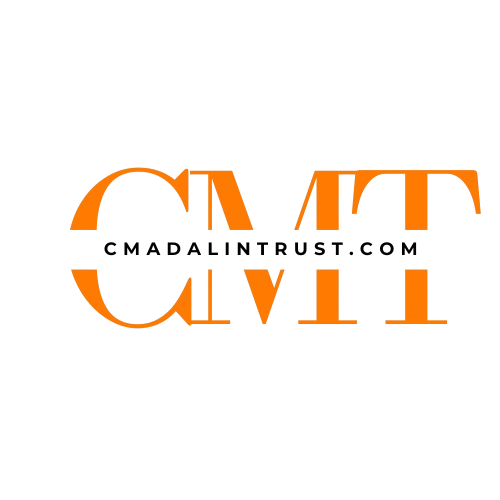Are you tired of living paycheck to paycheck? 🚀 Building wealth isn’t just for the lucky few—it’s a skill anyone can learn! In today’s complex financial landscape, personal finance courses have become the secret weapon for individuals looking to take control of their financial destiny. Did you know that individuals who invest in financial education are 73% more likely to feel confident about their financial future? Wealth Financial Courses.
This guide will walk you through everything you need to know about leveraging personal finance courses to build sustainable wealth, no matter your current financial situation.
This article may contain affiliate links to tools I love and trust—if you choose to purchase through them, I may earn a small commission at no extra cost to you. Your support helps keep this blog running and full of free resources! 🔒✨
How to Start Building Wealth in 2025
1: Understanding the Basics of Wealth Building
- 1.1 What is Wealth Building?
- 1.2 Income vs. Wealth: Key Differences
- 1.3 The Importance of Financial Literacy
- 1.4 Developing a Wealth-Building Mindset
2: Personal Finance Courses Landscape
- 2.1 Top Online Learning Platforms
- 2.2 Free vs. Paid Courses
- 2.3 How to Choose the Right Course
- 2.4 Learning Styles and Course Selection
3: Essential Financial Skills
- 3.1 Budgeting Fundamentals
- Expense Tracking Techniques
- Creating Sustainable Spending Plans
- 3.2 Debt Management Strategies
- – Debt Reduction Methods
- – Credit Score Improvement
- 3.3 Investment Basics
- – Understanding Investment Vehicles
- – Risk Management
- 3.4 Retirement Planning
- – Types of Retirement Accounts
- – Long-Term Financial Planning
- 3.5 Compound Interest Explained
- – Mathematical Modeling
- – Growth Scenarios
4: Maximizing Your Learning
- 4.1 Creating a Structured Learning Plan
- 4.2 Implementing Course Knowledge
- 4.3 Tracking Financial Progress
- 4.4 Joining Financial Communities
5: Avoiding Common Wealth-Building Mistakes
- 5.1 Procrastination Pitfalls
- 5.2 Recognizing Financial Scams
- 5.3 Continuous Learning Importance
- 5.4 Adapting Financial Strategies
6: Advanced Wealth-Building Strategies
- 6.1 Diversification Techniques
- 6.2 Passive Income Streams
- 6.3 Tax-Efficient Investing
- 6.4 Long-Term Wealth Preservation
Understanding the Basics of Wealth Building
Rationale: This section is the foundational understanding that sets the stage for the entire article. The goal is to demystify wealth building and provide a clear, accessible entry point for beginners.

- Define Wealth Building
- Distinguish between simply earning money and systematically building long-term financial assets
- Explain wealth as a combination of savings, investments, and asset accumulation
- Highlight that wealth building is a strategic, intentional process
- Income vs. Wealth Comparison
- Income: Regular money earned through work or business
- Wealth: Total value of assets minus liabilities
- Illustrate how high income doesn’t automatically mean wealth
- Provide real-world examples of wealth-building strategies
- Financial Literacy Importance
- Break down what financial literacy truly means
- Discuss how knowledge transforms financial decision-making
- Explain the long-term impact of financial education
- Highlight statistics about financial literacy’s impact on personal economics
- Mindset Shift Requirements
- Explore the psychological barriers to wealth-building
- Discuss fixed vs. growth mindsets in financial contexts
- Provide strategies for developing a wealth-oriented perspective
- Address common mental blocks that prevent financial growth
Top Personal Finance Courses for Beginners
Strategic Approach: This section acts as a practical guide to navigating the world of financial education, providing readers with actionable resources.

- Online Learning Platforms
- Detailed overview of platforms like Coursera, edX, Udemy, LearnWorlds
- Comparison of course structures and teaching methodologies
- Pricing models and value assessment
- Pros and cons of different online learning environments
- Free vs. Paid Courses Breakdown
- Analyze the value proposition of free courses
- Identify top free resources (Khan Academy, YouTube channels, Alison)
- Evaluate paid courses’ additional benefits
- Cost-benefit analysis of financial education investments
- Course Selection Criteria
- Instructor credentials and background
- Course curriculum depth
- User reviews and success stories
- Practical application opportunities
- Certification and recognition
- Learning Style Considerations
- Visual learners: Graphic-heavy courses
- Auditory learners: Podcast-style financial content
- Kinesthetic learners: Interactive and hands-on courses
- Recommended courses for each learning type
Essential Financial Skills Learned in Personal Finance Courses
Purpose: Provide a comprehensive overview of critical financial skills that transform theoretical knowledge into practical application.

Skill-Based Deep Dive:
- Budgeting and Expense Tracking
- Advanced budgeting techniques
- Digital tools and apps for tracking
- Creating sustainable spending plans
- Methods for identifying and cutting unnecessary expenses
- Debt Management Strategies
- Debt snowball vs. debt avalanche methods
- Negotiation techniques with creditors
- Understanding different types of debt
- Credit score improvement strategies
- Investment Fundamentals
- Basic investment vehicles (stocks, bonds, ETFs)
- Risk assessment and management
- Diversification principles
- Understanding market dynamics
- Beginner-friendly investment approaches
- Retirement Planning Basics
- Types of retirement accounts
- Contribution strategies
- Long-term financial planning
- Tax-efficient retirement saving methods
- Compound Interest Deep Dive
- Mathematical modeling of compound growth
- Early investing advantages
- Compounding in different investment scenarios
- Practical examples and calculators
How to Maximize Learning from Personal Finance Courses
Objective: Transform course knowledge into tangible financial improvements.

Implementation Strategies:
- Structured Learning Plan
- Goal setting techniques
- Creating a personal learning timeline
- Progress tracking methods
- Accountability mechanisms
- Real-Life Implementation
- Practical application frameworks
- Creating personal financial experiments
- Tracking and measuring results
- Adapting learned strategies
- Financial Community Engagement
- Online forums and discussion groups
- Networking with like-minded learners
- Mentorship opportunities
- Collaborative learning approaches
Common Mistakes to Avoid When Building Wealth

Preventative Guidance:
- Developing a growth mindset in finances
- Procrastination Pitfalls
- Psychological barriers to financial action
- Overcoming decision paralysis
- Creating momentum in financial learning
- Scheme and Scam Awareness
- Red flags in financial offers
- Critical thinking in investment decisions
- Due diligence techniques
- Continuous Learning Importance
- Adapting to changing financial landscapes
- Staying updated with economic trends
Conclusion
Your journey to building wealth starts with education! Personal finance courses are more than just learning—they’re an investment in yourself. Take the first step today, commit to continuous learning, and watch as your financial confidence and wealth grow.
Remember, the best time to start was yesterday; the next best time is right now! 💰🌟
Frequently Asked Questions (FAQ)
Q1: How much money do I need to start building wealth?
Answer: You can start building wealth with virtually any amount of money – even as little as $5 to $10 per week. The key is not the initial amount, but developing consistent habits and a strategic approach to saving and investing.
Q2: How long does it take to see significant results in wealth building?
Answer: Building meaningful wealth is typically a long-term process that requires patience and persistence.
Key factors influencing the timeline:
- Consistency of investments
- Rate of return
- Amount invested
- Personal income and expense management
- Economic conditions
Q3: Are online personal finance courses really worth the investment?
Answer: Online personal finance courses can be incredibly valuable when chosen carefully. Here’s a comprehensive breakdown:
Pros:
- Affordable compared to traditional financial advisors
- Flexible learning at your own pace
- Access to expert knowledge
- Can be completed from anywhere
- Often cheaper than potential financial mistakes
Evaluation Criteria:
- Instructor credentials
- Course curriculum depth
- User reviews and testimonials
- Practical, actionable content
- Updated regularly to reflect current financial landscapes
Q4: Can I build wealth if I’m currently in debt?
Answer: Absolutely! Being in debt doesn’t prevent wealth building – it just requires a strategic approach. Here’s a comprehensive strategy:
Debt Management Strategy:
- Prioritize high-interest debt first
- Use debt reduction methods like snowball or avalanche
- Negotiate lower interest rates
- Create a balanced budget that addresses debt and savings
Q5: What’s the biggest mistake people make when trying to build wealth?
Answer: The most significant mistake in wealth building is inaction and procrastination.
Psychological Barriers:
- Fear of financial complexity
- Feeling overwhelmed
- Imposter syndrome
- Short-term thinking
Recommended Approach:
- Start small and consistent
- Continuously educate yourself
- Automate financial processes
- Develop a long-term perspective
- Embrace learning from financial mistakes
- Focus on progress, not perfection

